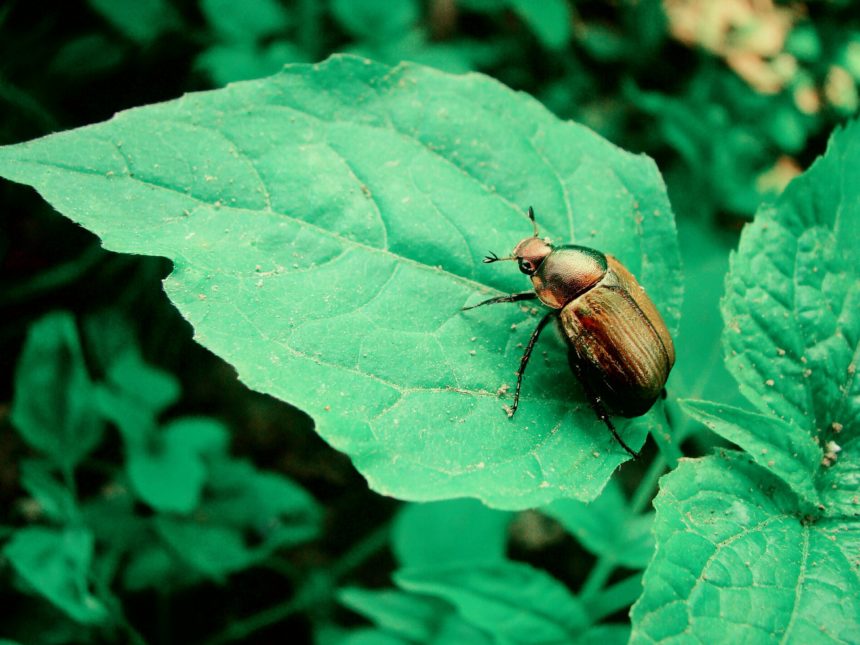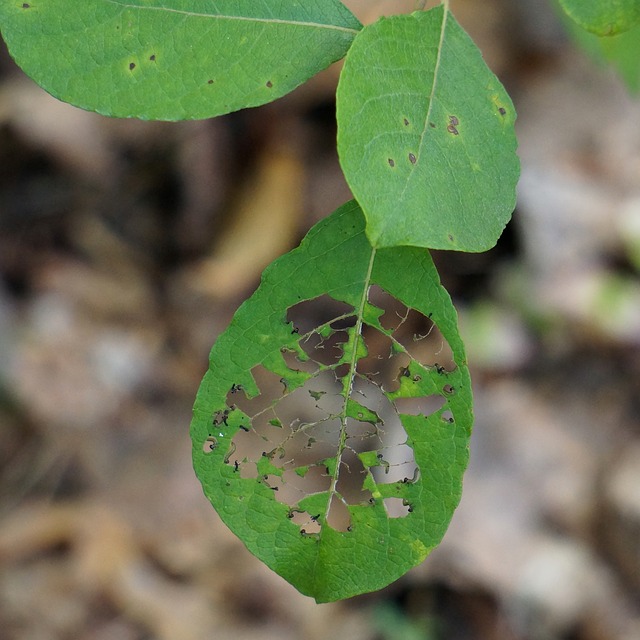Pesky Pests : Japanese Beetle

Living in the Northeast can be tough for those who like to keep a nice yard and landscape. Not only does the spring season begin later, but the risk of pests is just as high. Some of these pests are particularly destructive, especially the Japanese Beetle. The Japanese beetle thrives in the Eastern and Midwestern United States, where it has no natural predators. Unfortunately for gardeners and farmers, this can create quite the issue, as they swarm plants and destroy them. Here is some more information on preventing and treating a Japanese beetle invasion.
Identifying an Infestation
If you live in the East or Midwest, you more than likely have seen and dealt with the Japanese beetle, but how do you know if you have an infestation? There are a few big signs that you are under attack. One is spotting groups of the beetle around the plants they are eating. Since they feed in groups, damage is swift and can be severe. The groups will stand out, as their coloring is metallic and contrast greatly from the green leaves they’ll be targeting. Another sign of infestation is a large number of “skeletonized” leaves, like the picture on the right. The Japanese beetles’ destruction is widespread and covers over 300 species of plants, meaning it’s likely your favorite plant is probably a target. Grubs (baby Japanese beetle) are more difficult to identify as they are out of sight. One way to recognize a possible grub infestation is to see dying grass in your yard, as they target the grass roots.
Eradicating the Pest
Like identifying, there are also a few ways to eradicate the Japanese beetle. One of the most effective ways to stop Japanese beetles is to hand pick them. They are slow and can easily be picked up, making them easy to drown. To drown them, all that’s needed is a water and dish detergent solution. Unfortunately, if you’re not a fan of touching them, this solution isn’t for you. Another solution is beetle traps/bags, which uses scent to draw the beetles in, then they get trapped inside. The traps are extremely effective, however they can be too effective, as they can attract Japanese beetles from off of your property. Keep these away from your plants/garden so beetles don’t eat the plants on the way to the bag. You can also use a drop cloth or row covers to protect your plants. The row covers can be left alone, but the drop cloths will need to be put on and taken off daily. These two ideas protect your plants, but don’t eradicate the beetles. Finally, you can try insecticides, as they will take care of the beetles. You can have a service do the application for you, or do some research into what is allowable in your area. After the insecticide, keep a close look at your plants as they can wither from the application. If this is the case, just wash it off.
Preventing Japanese Beetles
Preventing Japanese beetles is a tough task that can take a year or more to see the results. Using Neem oil is a way to prevent the future birth of grubs, as the adults ingest it and the larvae they have die. Other prevention tactics include the introduction of nematodes or parasitic wasps/flies. These species will control or eat the grubs, leaving there no way for them to turn into an adult Japanese beetle. Finally, a long-term prevention requires use of milky spore. This product is sprayed on your yard yearly for 2-3 years, killing the grubs who ingest it. Although the complete eradication is slow developing, it lasts for a long period of time (up to 10 years!), meaning a couple years of work results in around a decade of protection. Each way of prevention focuses on striking while the beetle is still in the grub stage, so preparations need to be made in the late fall or very early spring.
Unfortunately, prevention and eradication is not guaranteed, as neighbors yards may still harbor beetles who attack your plants. The Japanese beetle is very resilient and may always be a fight for a gardener in the East and Midwest. If you don’t want to deal with them at all, you have the option to pick plants that the beetles will not be attracted to, but this is a big sacrifice for a pest. Check out our other blog posts for more information on pests here and here!
Share This Post
Recent Posts
- Treating Your Lawn During a Drought July 15, 2017
- 7 Tips for Mowing your Lawn July 2, 2017
- 5 Great Outdoor Entertainment Ideas June 23, 2017
- Introduction into Deadheading June 19, 2017
- Pesky Pests : Japanese Beetle June 10, 2017
